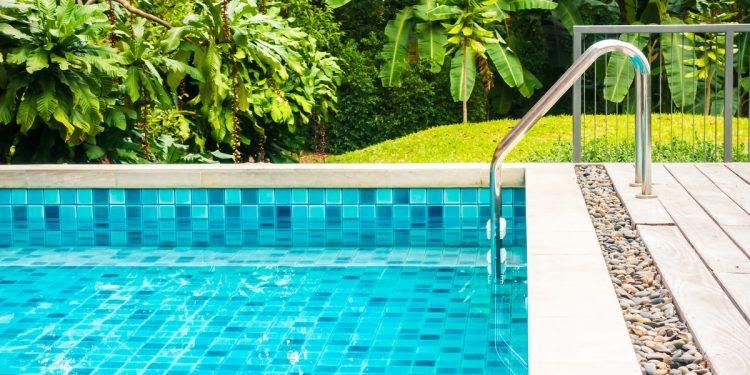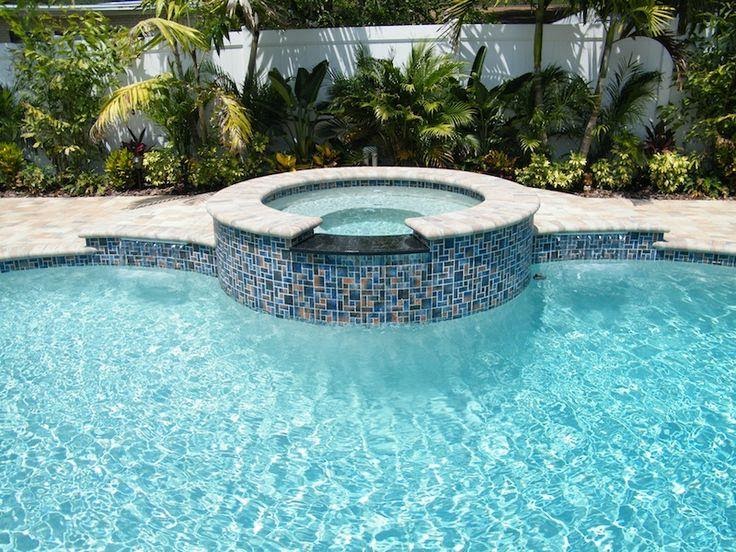Beyond the good looks of your swimming pool, there is a fantastic way to repurpose the utility of your swimming pool with correct tiles. It also has some exciting features on the elevated spas, raised pool walls on top of the water surface, and infinity edges.
Furthermore, the two critical roles that the pool tiles add to the facility are maintenance and longevity. Therefore, the style of the swimming pool tiles enhances the value of your swimming pool.
Materials for Swimming Pool
What exactly do pool tiles look like? Three primary materials can be used in pool tiles: natural stone, porcelain, and glass. In addition, the components are flat, pre-formed rigid plates with a size of about one-1uater to three-eighths of one inch in thickness.
At the same time, when applying these pool tiles on the pool wall, they appear as a sheet of about six inches in a square shape. The preparation of the sheet involves the gluing of each tile with a flexible nylon mesh to make a whole.

Also, the sheet has one large tile together with a couple of smaller ones in the form of a mosaic. Furthermore, having a mesh behind each swimming pool tile ensures that it is easier to handle. In addition, you can also apply the tile to the pool walls in a neat way.
Moreover, this material helps to keep the bonding of the tile with the adhesive material. Also, this material is known as a thin-set while it contains grout that fixes it to the pool walls. The shapes are usually either square or rectangular to fix them together into a whole.
When laying them in the mosaic pattern, it resembles small tiles that you can quickly fix together on a square sheet. The other shapes include round, curvy, geometric, or spherical shapes.
Performance of Pool Tiles
A suitable property of the pool tile is its durability to withstand extreme physical and weather conditions. For instance, the pool tiles have a remarkable ability to be better than kitchen and bath tiles through their formation.
Swimming pool tiles can come with direct sunlight, continual exposure to the aquatic environment, and extreme temperature changes. On the other hand, it also withstands harsh chemicals in maintaining the pool water over time.
Another interesting importance of using pool tiles is cleaning with a brush or a simple wipe. Besides, you can also have the mineral scale accrue on the surface of the pool tiles from hard water.
It can form sticky biofilm such as from the waste products of bathing, use of body oil, sunscreen, and sweat. All these accumulations gather along the interior perimeter of the pool to form a smooth tile but non-porous surface. Such a surface makes it easier to remove any unwanted build-up.
Position and Method of placing Pool Tiles
First, the position of the waterline of the pool tile is about six inches tall. At this height, it is easy to set the pool water level at a point that is about halfway to the top. In other words, you can have the water level at about three inches when submerging the other half.
Having such a position for the water level gives the pool an overall balanced look. This arrangement also promotes the pool skimmer to clean the floating debris from the water surface. In the end, you can have a space of five to six inches between the perimeter top and the water level.
Furthermore, this positioning is an excellent way to ensure that swimmers who use the tool are optimally comfortable. Moreover, the band of the pool tile may appear taller than the top section of the pool. In such a case, the units comprise what we call the raised bond beam.
The beam also has a portion of the pool wall above the water surface by 6 inches in height. You can even apply the same vertical pool shell face to the tile above the waterline. And the builder may use them to cover the horizontal surfaces like the spa dam wall tops.

Common Types of Materials for Pool Tiles
Generally, pool tiles are made from three different materials that can work well for swimming pools. Let us carefully consider them one after the other.
Porcelain
Porcelain contains a blend of dense but fine clay measures with sand, slate, pulverized rock, glass, and marble. The manufacturers can also shape these materials into standard sizes and then glaze them into glass-like coatings for the best output.
The final preparation stage is firing up the material in a kiln oven with a high temperature to obtain a hardened material. Although you can find many ceramic materials at home, porcelain is better in pool tiles for their lesser porosity than ceramics.
In other words, porcelain is relatively stronger than ceramics, which is inarguably the reason why porcelain is better in constructing swimming pool tiles. Besides, it is most economical to employ porcelain instead of the other variety of options at your disposal. Moreover, porcelain also has different colors, textures, shiny patterns, and matte finishes.
Natural Stone
The source of natural stone is the stone carved out of different types of stone from the quarry. Typical examples of these stone pool tiles include granite, slate, and other types of treated travertine.
All these materials produce final durable and waterproof materials that can serve the purpose of a waterline. The shapes can be in squares or rectangles and in different shapes and sizes concerning the natural stone.
For instance, the sizes include six-by-six inches apiece of the tile while having other smaller sizes. Each of the tiles has an attached mesh behind it to connect to the pool surface. In all, the porcelain counterparts can simply be an upgrade in terms of price. Still, the natural stone brings a new layer of beauty in a natural appearance.
Glass
Glass tiles are made from pressure-fused glass and are now applicable in constructing pool tiles. An outstanding feature of the glass material for pool tile is its luminosity with both flat and even transparent surfaces.
This feature enables it to follow a rippled surface for an indecent and rainbow effect. glass also comes in a diverse and visually dramatic array. And the forms may include wavy patterns, internal striations, and a metallic appearance of gold, bronze, and silver colors.

